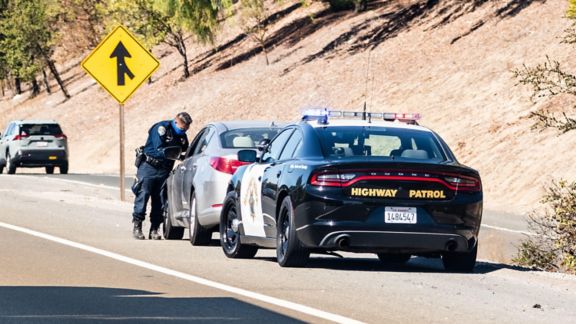James C. Fell

Jim’s areas of expertise include behavioral studies in traffic safety, evaluating impaired driving countermeasures, research on underage drinking, and determining the effectiveness of various alcohol policies and safety issues associated with the legalization of marijuana in the states.
Jim is currently working on a variety of projects including the National Roadside Survey of 2025 in partnership with Dunlap & Associates and sponsored by the National Highway Traffic Safety Administration (NHTSA), consulting on a grant awarded to Klein Buendel entitled Policy and Training Intervention in Responsible Marijuana Sales Practices to Reduce the Risk of Selling to Intoxicated Customers, writing a manuscript on the importance of data from low and middle income countries for the AB-InBev Foundation (ABIF), consulting on a contract with the AAA Foundation for Traffic Safety (AAAFTS) to determine factors that influence seat belt usage, and working with Dunlap & Associates on updating a Guide for Successful Impaired Driving Task Forces sponsored by NHTSA.
Jim recently completed several other projects. State of Knowledge and Practice: Impaired Driving Technology, sponsored by NHTSA, involved a comprehensive literature review and investigation into the extent of use of the technology. Another project funded by NHTSA was Successful Impaired Driving Task Forces, which involves discussions with State Impaired Driving Task Force members to determine best practices. In addition, NHTSA also funded a project titled Examine Issues with Prosecuting Driving-Under-the-Influence-of-Drugs (DUID) Cases in which discussions with state prosecutors will document issues with prosecuting DUID. Jim also researched Public Acceptance of Underutilized Strategies in Traffic Safety, funded by the National Safety Council, which involved a survey of public support for specific countermeasures in traffic safety.
Jim has worked on several other notable projects over the years, such as a study of the minimum legal marijuana use age 21 laws and enforcement in California, (determining the prevalence of certain drugs found in the blood of serious and fatally injured drivers from seven trauma centers around the country), a public survey of underutilized strategies to reduce traffic fatalities, a special impaired driving enforcement effort in Maryland, and a study of DUI in Miami-Dade County (FL).
During the 1990s, when states were considering lowering their illegal BAC limit for driving from .10 g/dL to .08 g/dL, Jim co-authored one of the first studies showing the effectiveness of laws lowering the BAC levels on reducing impaired driving fatal crashes. Subsequently, Jim was invited by officials in 12 states to provide expert testimony on the merits of lowering the BAC to .08 (DE, DC, IL, IN, MD, MN, MO, NE, NC, TN, TX, and WV). In 2000, President Clinton signed a bill providing a strong incentive for all states to lower the BAC limit to .08; all states and the District of Columbia eventually adopted the law. More recently, Jim collaborated with Dr. Robert Voas on various articles demonstrating the rationale and summarizing the evidence to lower the BAC limit from the current .08 g/dL to .05 g/dL. With co-author Michael Scherer, he conducted a meta-analysis of studies around the world evaluating various BAC limits. It was concluded that if the U.S. adopted a .05 BAC limit nationwide, it could save up to 1790 lives each year.
Based on an accumulation of his research studies and publications over many years, Jim was named to Stanford University's Top 2% Scientists in the World for 2023. He also received the Chairman's Award from the Washington Regional Alcohol Program for his contributions over many years as a member and treasurer.
Quick Links
Education
MS
State University of New York at Buffalo
BS
State University of New York at Buffalo
Appointments & Affiliations
President | 2022 - 2024
International Council on Alcohol, Drugs & Traffic Safety
Consultant | 2019
United Nations, Developed strategies to tackle the issue of impaired driving in the Asia-Pacific regional countries
Honors & Awards
Top 2% Scientists in the World | 2023
Stanford University
Chairman's Award | 2023
Washington Regional Alcohol Program (WRAP)
Award of Merit | 2019
Association for the Advancement of Automotive Medicine (AAAM)'s highest award given to an individual who has made significant scientific contributions to an aspect of automotive medicine over many years
Haddon Award | 2019
International Council on Alcohol, Drugs, and Traffic Safety (ICADTS)
Who’s Who in America | 2018
Marquis
The Donald F. Huelke Lifetime Membership Award | 2016
Association for the Advancement of Automotive Medicine (AAAM)
Kevin Quinlan Advocacy Award | 2015
Maryland Highway Safety Office for for tremendous dedication, conviction, and leadership to making Maryland's roadways safer, specifically through impaired driving prevention
James J. Howard Highway Safety Trailblazer Award | 2015
Governors Highway Safety Association (GHSA) honored sustained outstanding leadership in endeavors that significantly improve highway safety
Erik Widmark Award | 2013
International Council on Alcohol, Drugs and Traffic Safety (ICADTS), for outstanding, sustained, and meritorious contribution to the field of alcohol, drugs and traffic safety
Ralph Hingson Research to Practice Award | 2008
MADD (Mothers Against Drunk Driving)
Superior Performance Award | 1996, 1984
National Highway Traffic Safety Administration (NHTSA)
Project Contributions
Publications
-
Yes, We Can Substantially Reduce Alcohol-Impaired Driving Fatal Crashes
Expert View | January 28, 2025
-
opens in new tab“Modeling of Drinking and Driving Behaviors Among Adolescents and Young Adults in the United States: Complexities and Intervention Outcomes.”
Journal Article | July 22, 2024
-
opens in new tab“The Effectiveness of Responsible Beverage Service Training Programs: A Literature Review and Synthesis.”
Journal Article | April 18, 2024
-
opens in new tab“Best Practices of Successful State Impaired-Driving Task Forces.”
Project Report | April 1, 2024
-
opens in new tab“Vision Zero and Impaired Driving: Near and Longer-Term Opportunities for Preventing Death and Injuries.”
Journal Article | January 1, 2024
-
opens in new tab“Best Practices for Increasing Seat Belt Use in Rural Communities.”
Project Report | August 1, 2023
-
opens in new tab“Alcohol and Drug Prevalence Among Seriously or Fatally Injured Road Users.”
Project Report | December 1, 2022
-
opens in new tab"Mapping the Complex Causal Mechanisms of Drinking and Driving Behaviors among Adolescents and Young Adults."
Journal Article | June 28, 2022







